To mark the 50th anniversary of the Conservatoire du Littoral, it was a particularly busy summer on Grand Rouveau Island! Reports, tours of the island and lighthouse, and nature walks punctuated this season dedicated to raising awareness, not to mention the traditional annual monitoring of flora and fauna!
Seasonal workers from the Regional Marine Guard, guardians of the island!
For the third consecutive year, two eco-guards joined the PIM Initiative team for the summer season. Thanks to the Regional Marine Guard funding scheme set up by the South Region, Mari and Maxime spent two to three days a week patrolling the waters around Grand Rouveau to raise awareness among boaters about protecting the site. They taught them about good practices at sea (anchoring in sand to limit the impact on underwater grass beds, good fishing practices, environmentally friendly sunscreen, etc.) as well as marine conservation issues (the importance of Posidonia in the local ecosystem, disturbance of marine and terrestrial species) were among the topics discussed with users during the awareness-raising sessions. These patrols were carried out in collaboration with Atelier Bleu CPIE Côte Provençale, an organization specializing in engaging communication and raising awareness of environmental issues.
Our two eco-guards also played the leading role in a series of reports made on the island, including a shoot with a team from the South Region to produce their communication materials on the Regional Marine Guard system, as well as the production of a short documentary for the MedPAN association, which brings together a large network of marine protected areas in the Mediterranean.
Finally, an event was organized on the island of Les Embiez during the Isla festival. Festival-goers enjoyed boat trips to Grand Rouveau and a nature tour of the island.
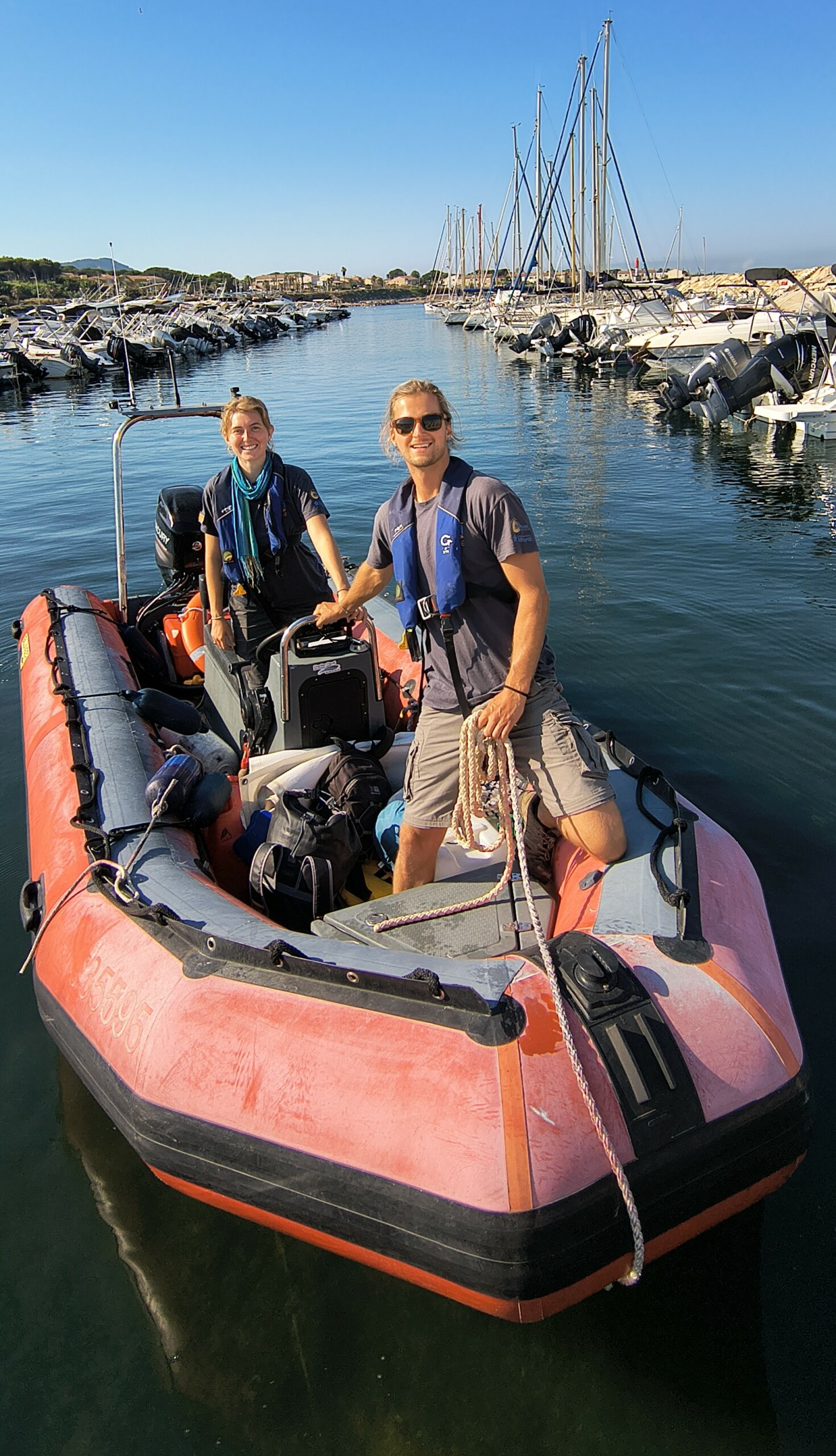
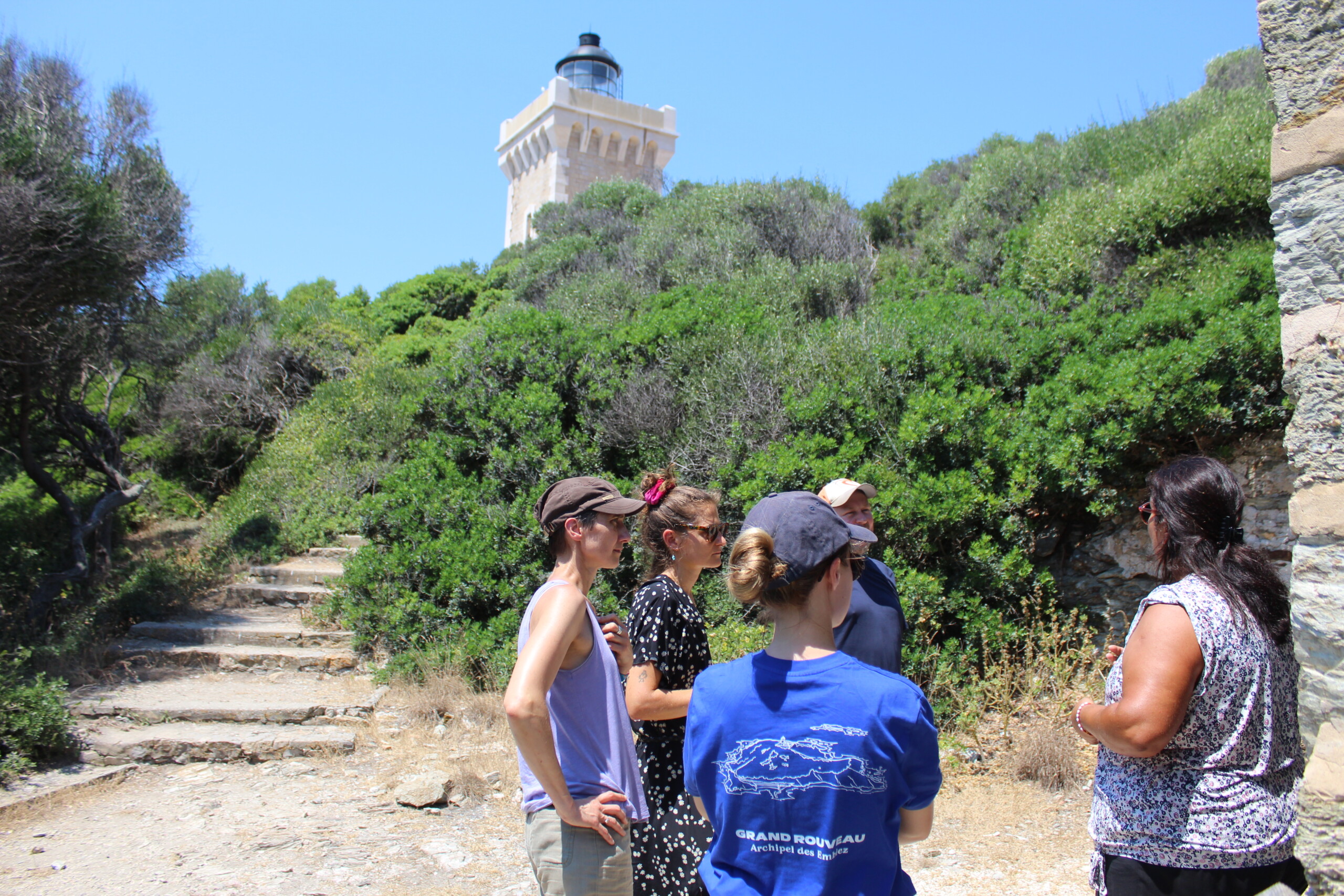
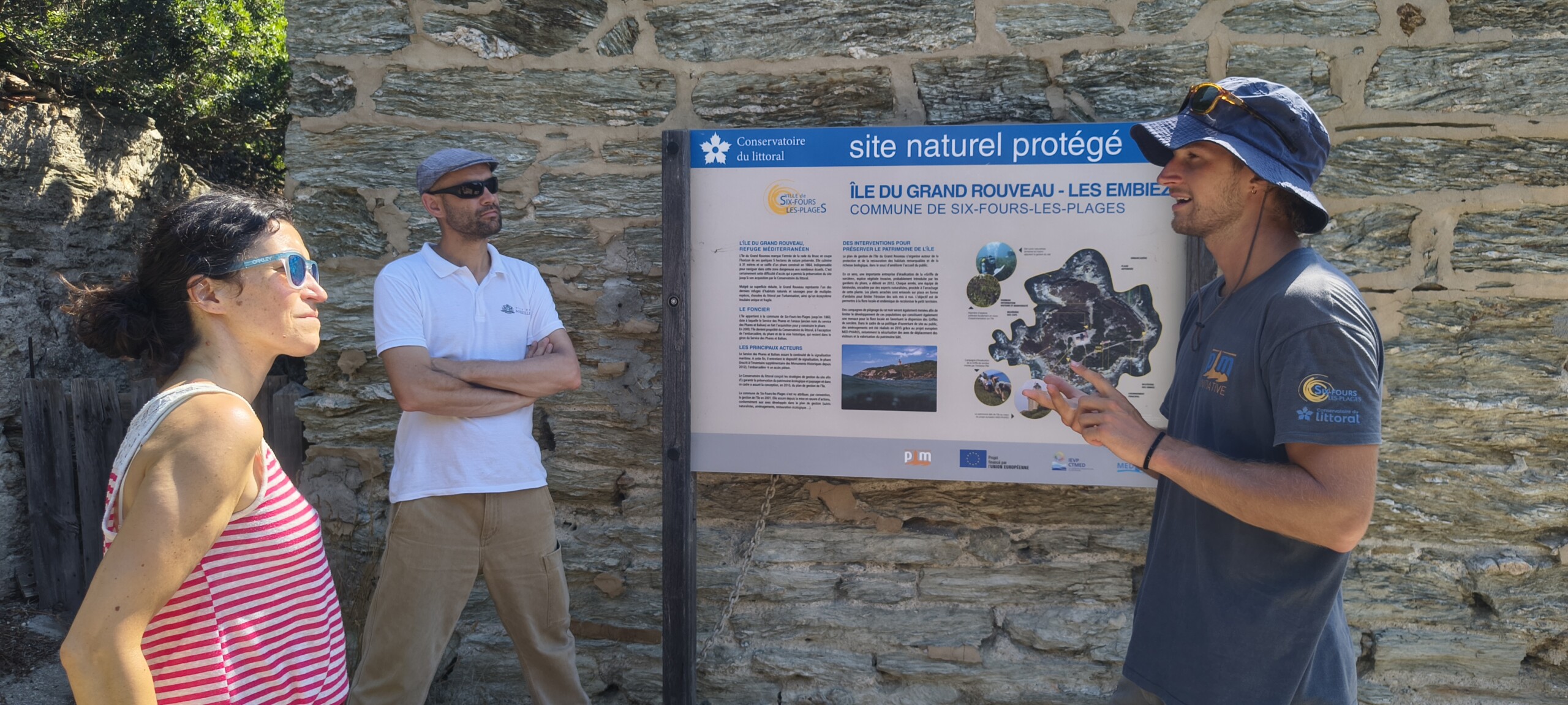
The 50th anniversary of the Conservatoire du Littoral celebrated on site
Created in 1975, the Conservatoire du Littoral (CdL) is celebrating its 50th anniversary this year. This public institution, which has no equivalent in Europe, owns more than 80 sites in the Provence-Alpes-Côte d’Azur region, including the island of Grand Rouveau.
To mark the occasion, PIM Initiative, the CdL, and Phares & Balises (the organization that manages the central building) joined forces to organize a guided tour of the Grand Rouveau lighthouse, which is usually closed to the public. Around fifty people had the chance to discover this iconic monument on the island. The program included a dive into the history of the building, an exploration of local biodiversity, an introduction to the nature conservation efforts carried out on this unique site, and lively discussions about ecological issues and nature monitoring.
A temporary exhibition consisting of seven information and awareness panels, created in collaboration with the CdL and Six-Fours-les-Plages town hall teams, was also installed on the Brusc promenade (Grand Gaou peninsula) to celebrate this anniversary while raising public awareness of the value of this site! These panels, presenting the missions of Initiative PIM, its activities on the island of Grand Rouveau, which it co-manages, and the issues associated with it, were on display throughout August and will still be available in September.
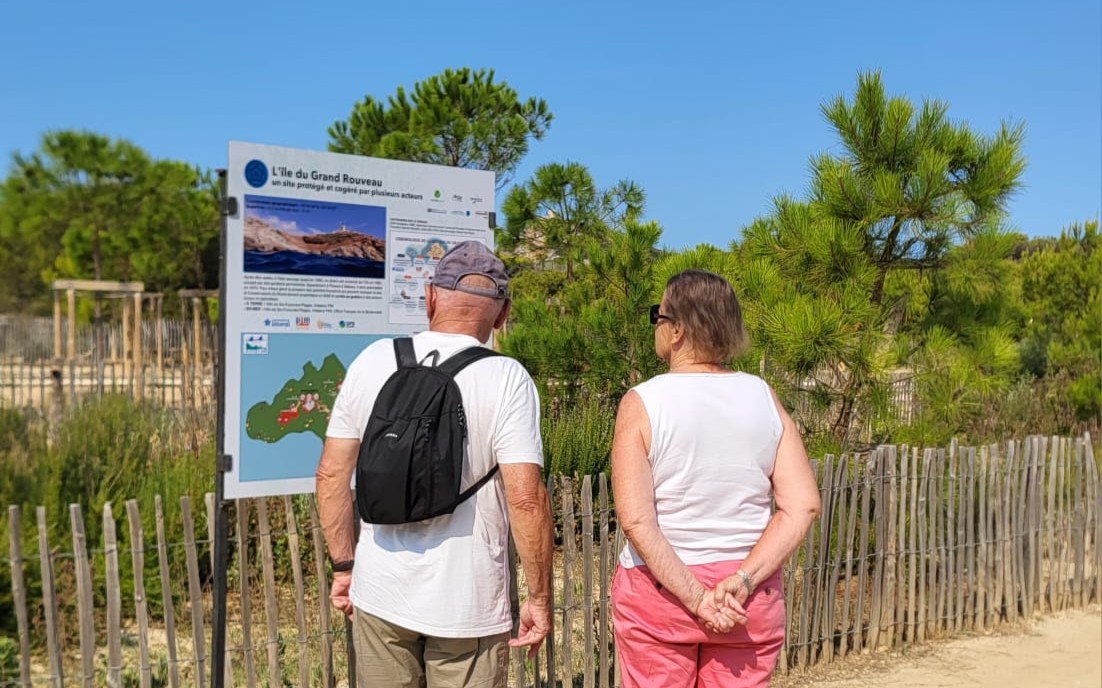
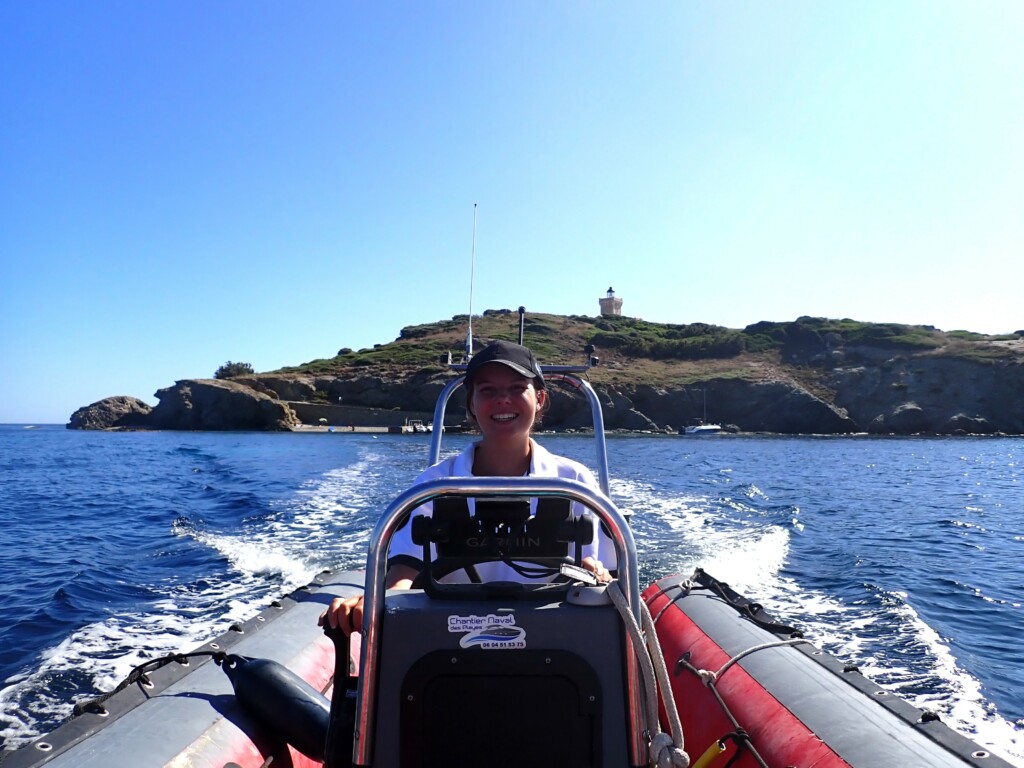
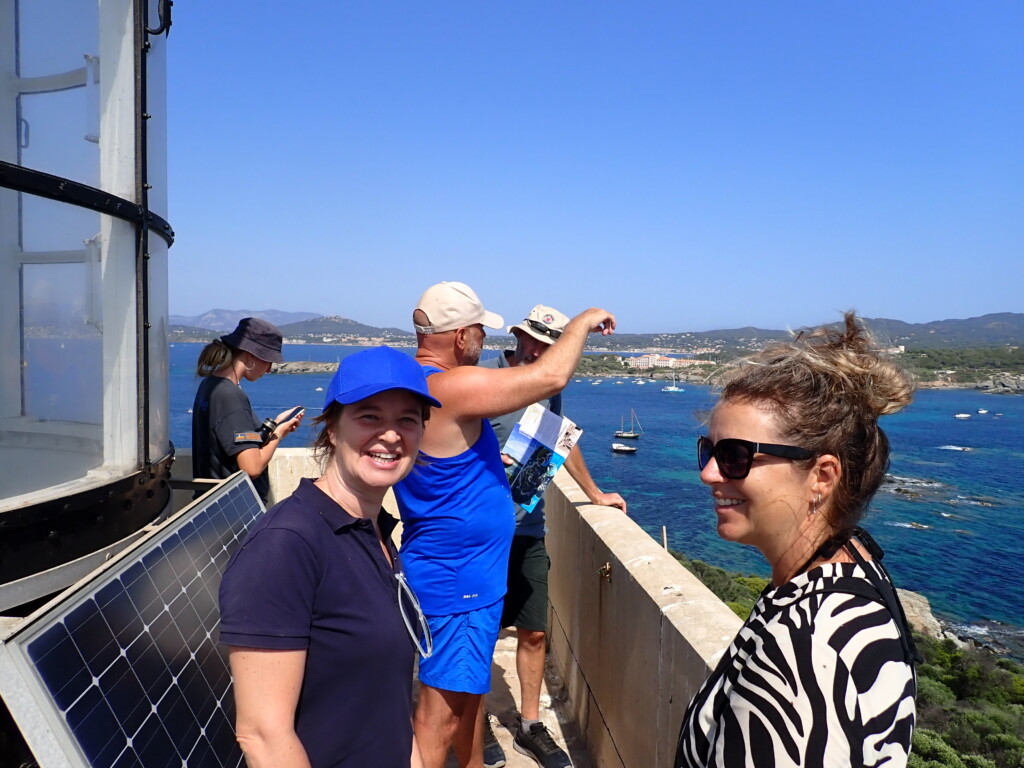
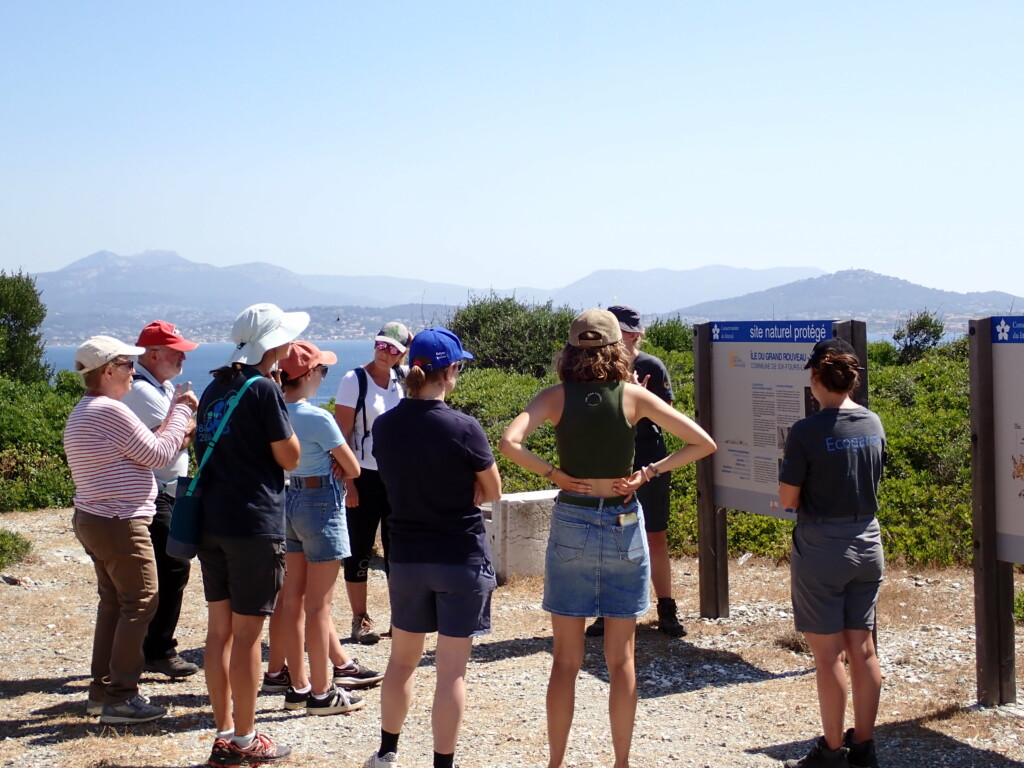
New homes for the geckos that inhabit the island!
The summer of 2025 marks two major events for the European tree gecko (Euleptes europaea) population of Grand Rouveau.
In early June, new prototypes of artificial shelters were installed on the island. Built from bio-based materials and equipped with a specific space for the small geckos to lay their eggs, these new shelters are designed to promote the reproduction of this endangered species.
This same period also marks a turning point in scientific research on these small geckos. As part of Julie Quessada’s thesis, which began at the end of 2024, individuals were collected on the island to study their biology (behavior, reproduction, etc.) in the laboratory, and will be released soon. This study, which is the first of its kind on this still little-known species, is strictly regulated by specific rules and exemptions granted to researchers working on the island. A better understanding of phyllodactyls would thus enable more effective conservation measures to be put in place.
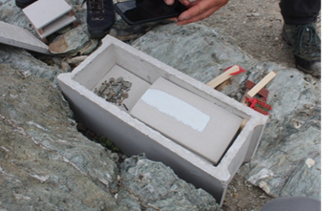
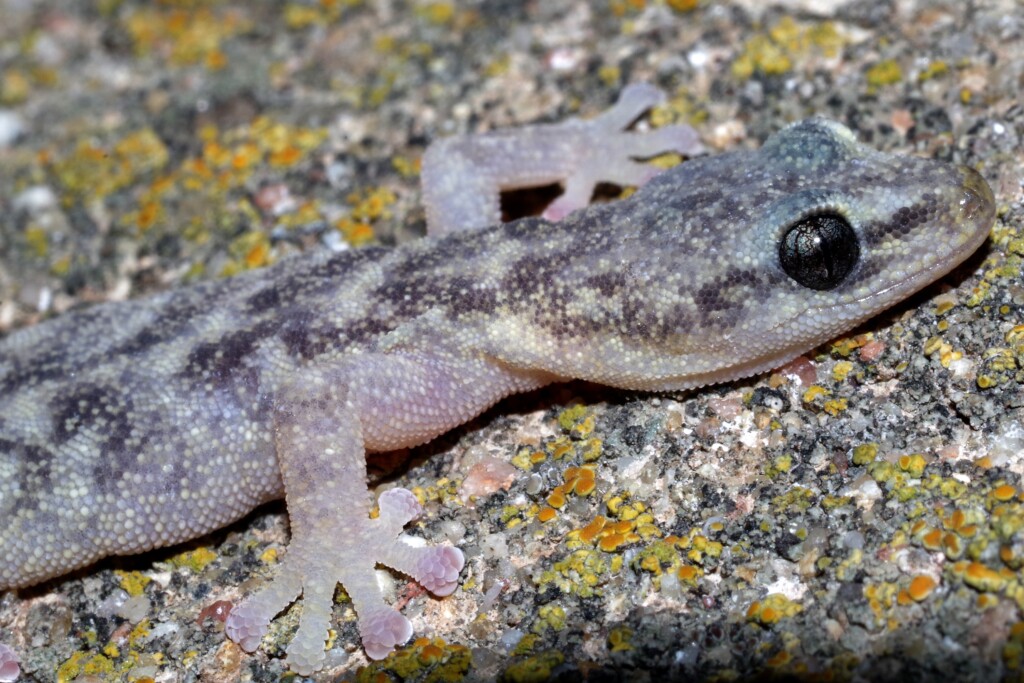
Invasive species management: preventive measures against their return, renewed every year!
The biosecurity measures deployed on the Grand Rouveau site, designed to prevent terrestrial mammals and exotic plants from repopulating the site following various campaigns to eliminate them, are being maintained. These measures ensure that the fragile balance of the local ecosystem is not disrupted again by the introduction of invasive exotic species.
All of the bait boxes designed to repel the black rat, which has been eradicated since 2018, were inspected in June by BTS GPN students during the last school project and showed no signs of the rodent’s return, confirming the success of the operation to date. However, there is a constant risk of the rat being reintroduced, particularly when boats land on the island.
The Witch’s claw (Carpobrotus edulis), an invasive plant native to South Africa that has been the subject of continuous eradication efforts since 2012, is also still under surveillance by our teams, who comb through the island’s vegetation every summer to track down any regrowth that could regain ground on the island’s surface!
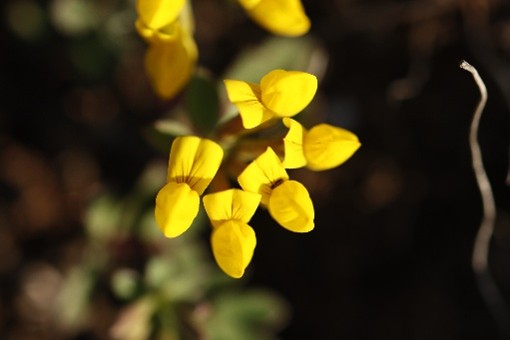
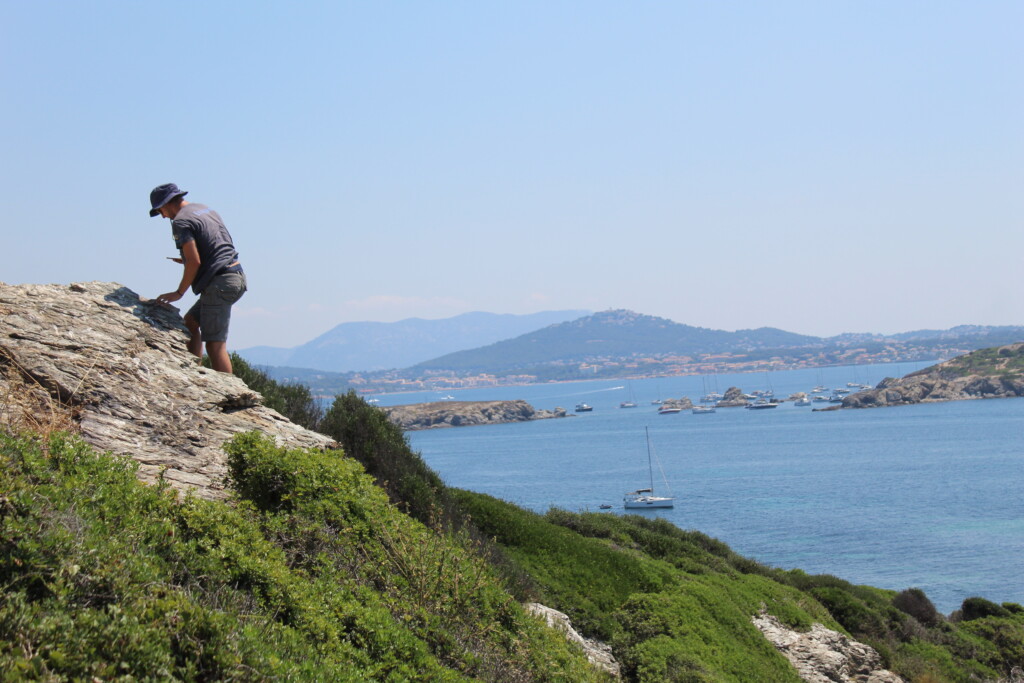
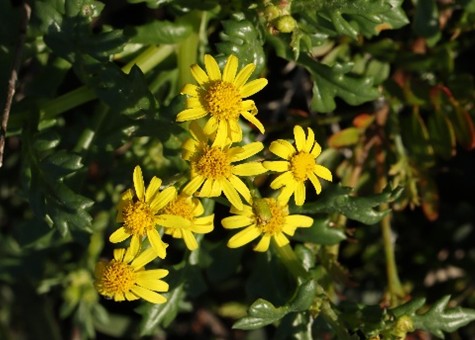
Knowledge acquisition: studying to better protect
These post-eradication checks are supplemented by the usual naturalist monitoring activities: updating the botanical inventory, monitoring the nesting of the yellow-legged gull, photographic monitoring of vegetation, etc. All of these studies enable us to keep a watchful eye on the island’s ecosystem and its reactions to the various disturbances it undergoes, such as climate change and increased tourist pressure during the summer season.
In the spring of 2025, Noé Fleury-Frouart, a Master’s 1 intern, joined the Initiative PIM team with the task of compiling a botanical inventory and map of the different floral habitats of Grand Rouveau. Analyses have shown that the areas previously occupied by witch’s claw are gradually giving way to species native to the island, such as false laburnum and butterbur. These encouraging results confirm the success of efforts to combat invasive species, aimed at restoring the natural habitat of native species!
